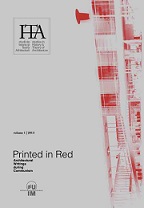From Casa Scânteii to Casa Poporului and Back. Architecture as Icon of a Totalitarian Regime
From Casa Scânteii to Casa Poporului and Back. Architecture as Icon of a Totalitarian Regime
Author(s): Irina TulbureSubject(s): Architecture
Published by: Universitatea de Arhitectură şi Urbanism »Ion Mincu«
Keywords: communist propaganda; Socialist Realism; politics and architecture; mass press; Scânteia
Summary/Abstract: Totalitarian regimes have often made use of architecture as a means of propaganda. Conceived largely through the reiteration of classical principles, the buildings that bear testimony to this era can be easily placed in a distinct architectural niche. In most cases, totalitarian architecture does not represent or speak of itself, but is rather a bearer of messages, an intermediary of the political regime. Casa Scânteii and Casa Republicii are the two buildings that mark the official beginning and the final moment of the communist regime in Romania. Despite the apparent similarity of their architectural style and despite the fact that they are both symbols of the communist power, the two palaces embody distinct political stages, entirely independent of the inner evolutional process of architecture. The message sent, at an interval of forty years, can be deciphered not through an architectural code but by means of a complex system of Soviet-rooted propaganda. Rewriting of the past and of recorded history, along with the invention of a politicized version of it, is one of the methods used by communist regimes. This process had as its final goal the creation of a mythology of communism, consolidated through celebrations and ceremonies, pinned down in a red calendar of history. Each present action was justified through the past, as if the past was indisputable evidence, but in reality the past was continuously changing: party history in the fifties was by far different from the version it would flaunt in the eighties. Each celebration of a key moment marked in the red calendar was an opportunity for the public display of regime achievements, with architecture as incontrovertible material proof. The new man, the one responsible for these achievements, was one of the most disputed roles on the stage of communist construction.
Journal: sITA – studii de Istoria şi Teoria Arhitecturii
- Issue Year: 2013
- Issue No: 1
- Page Range: 78-89
- Page Count: 12
- Language: English

